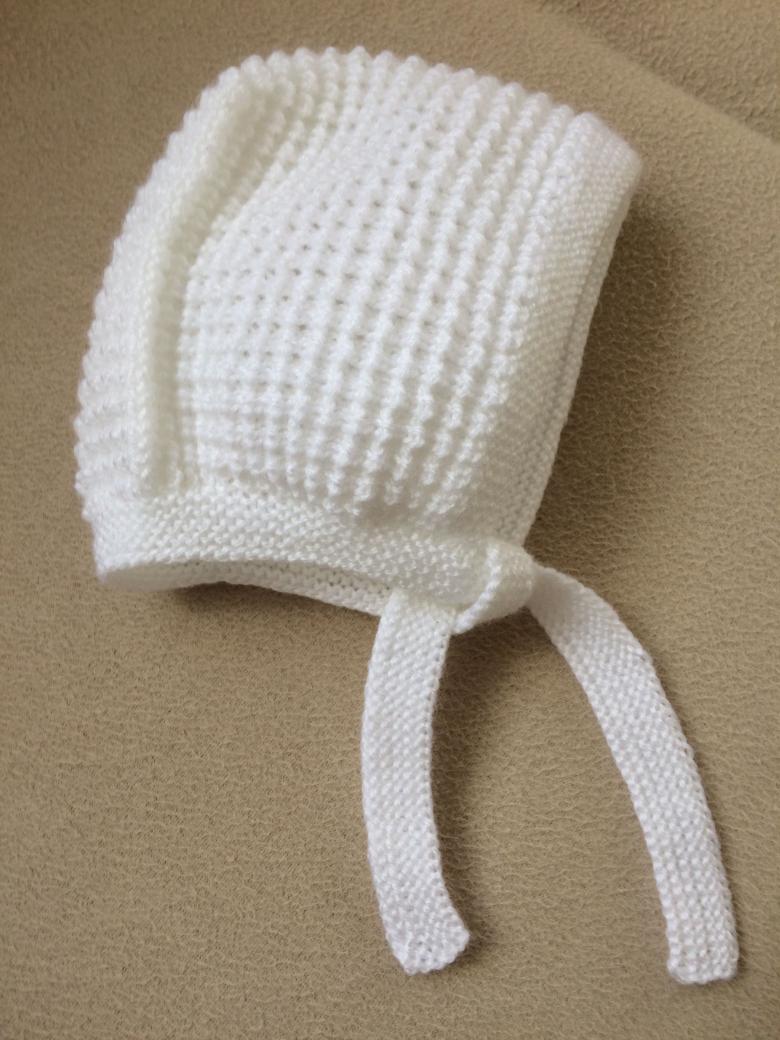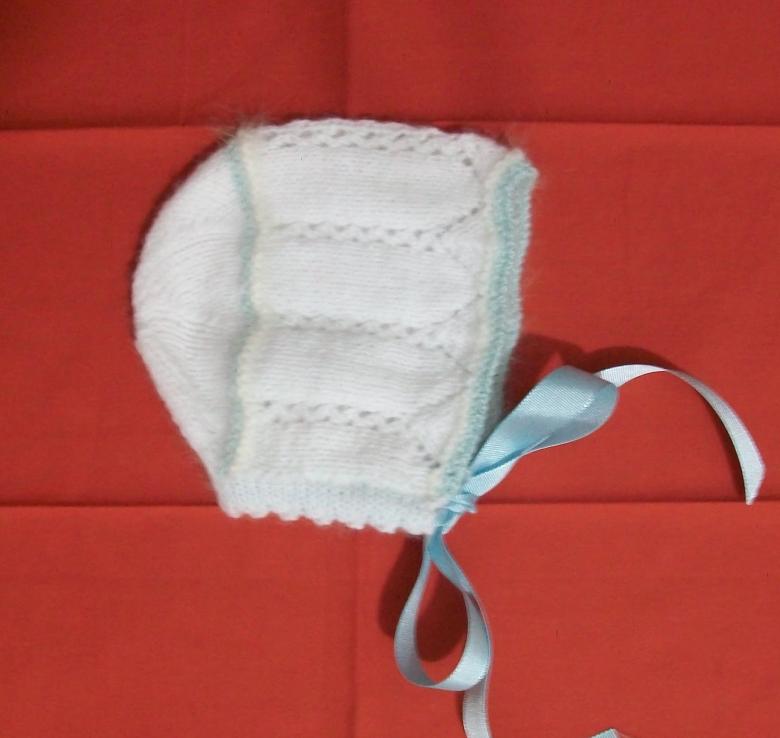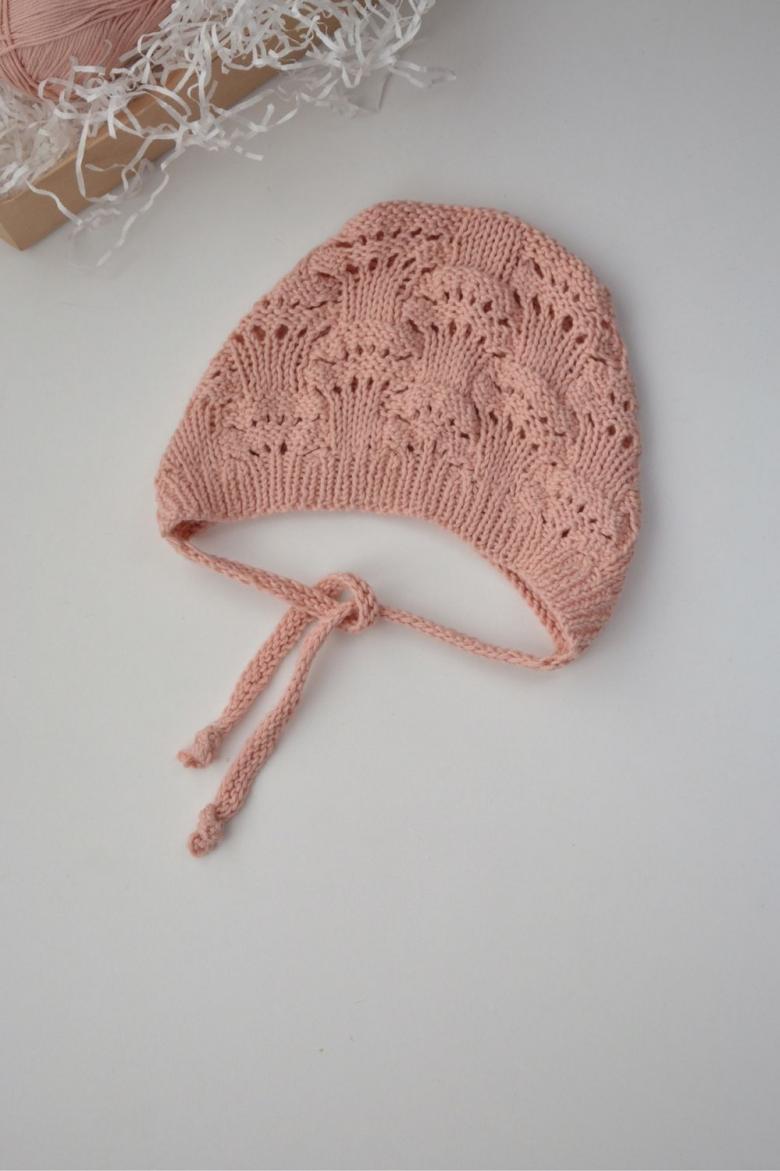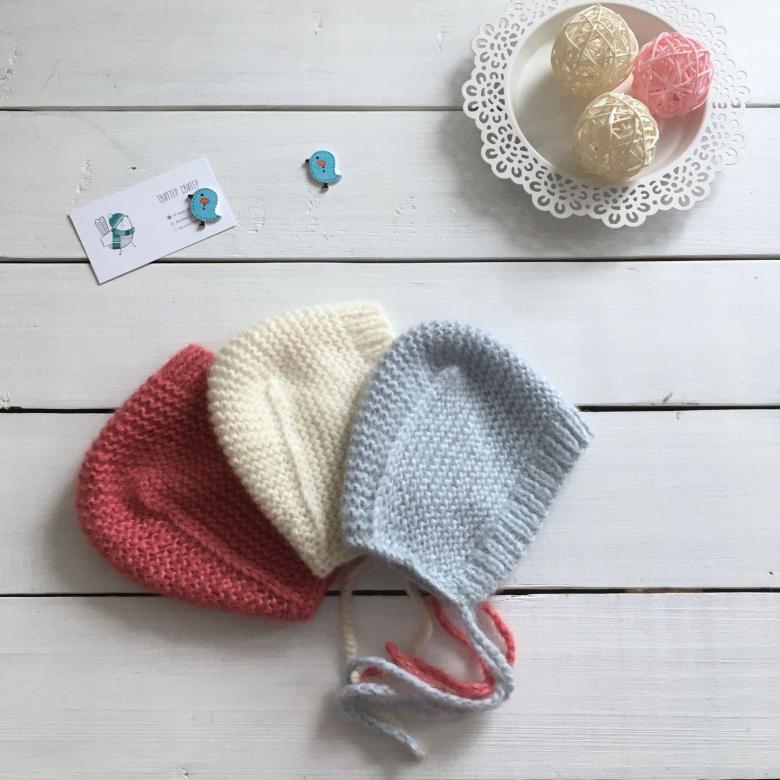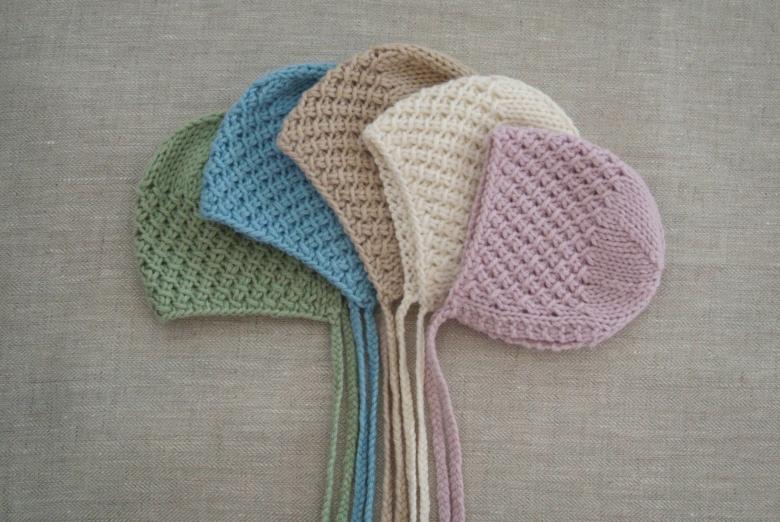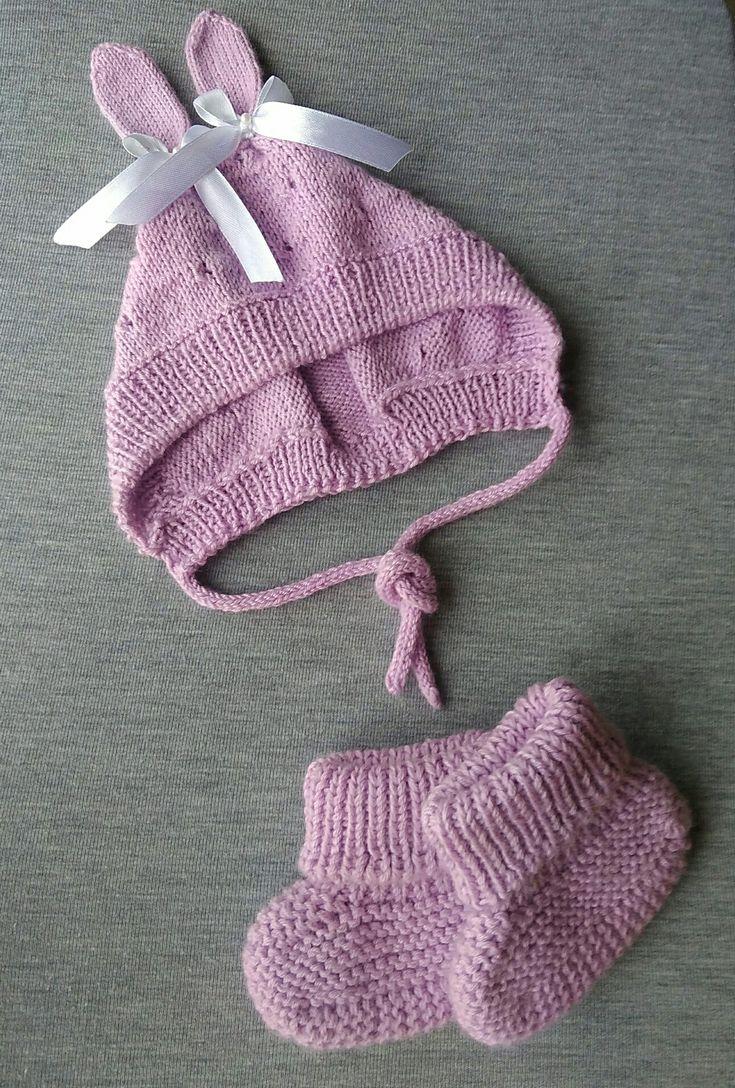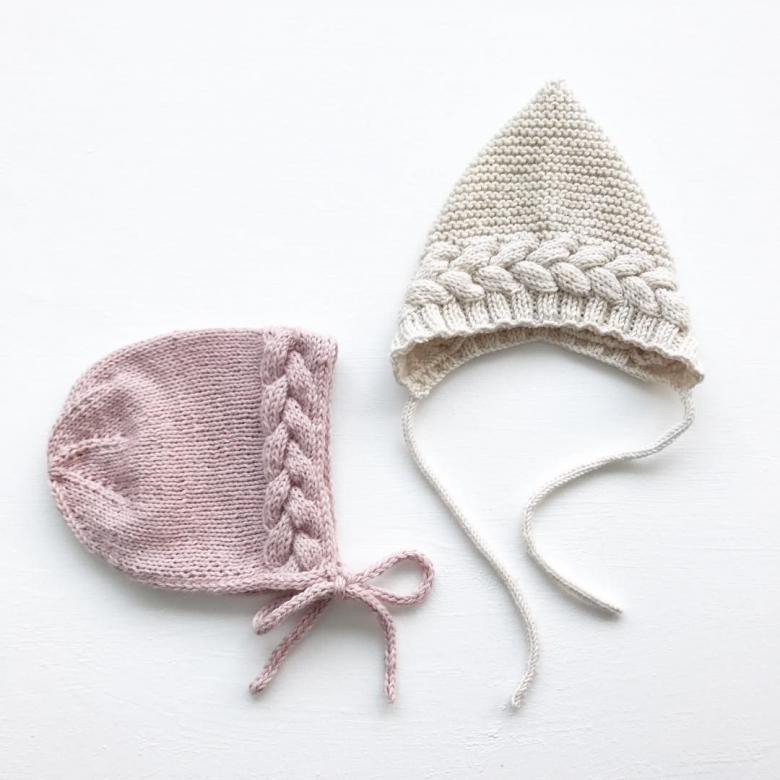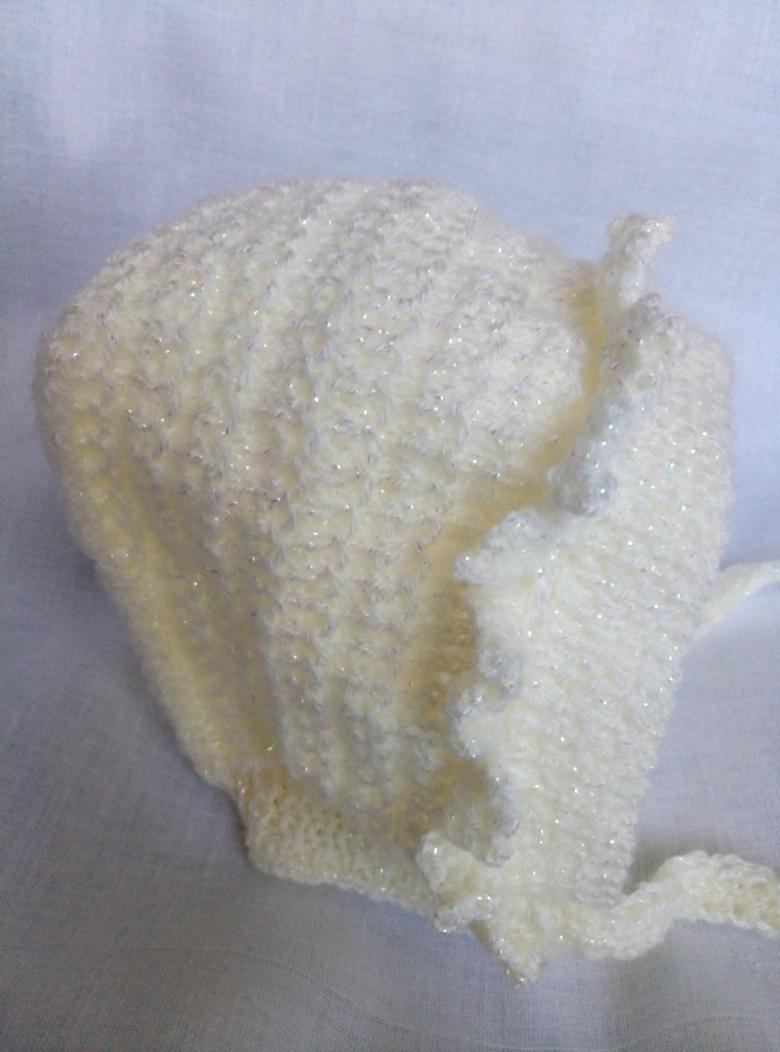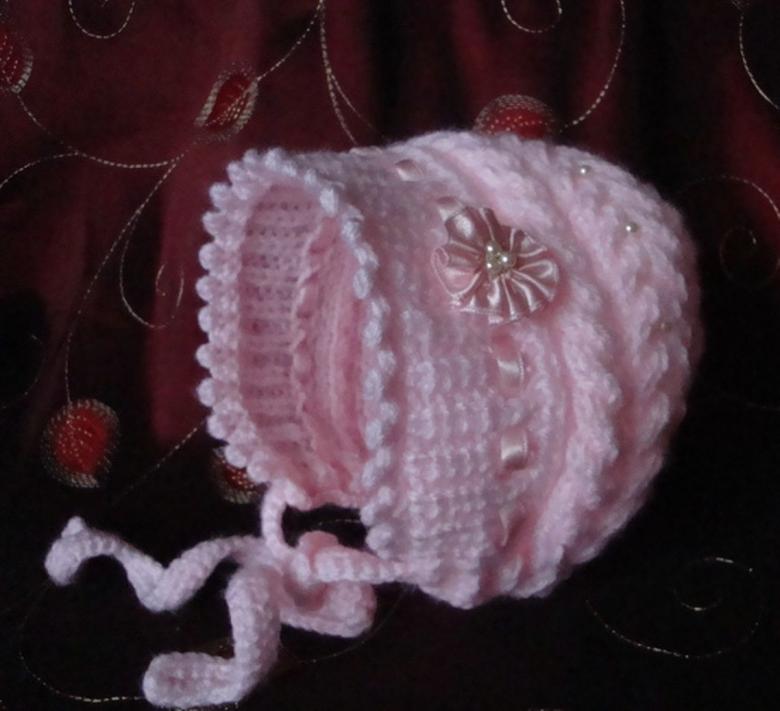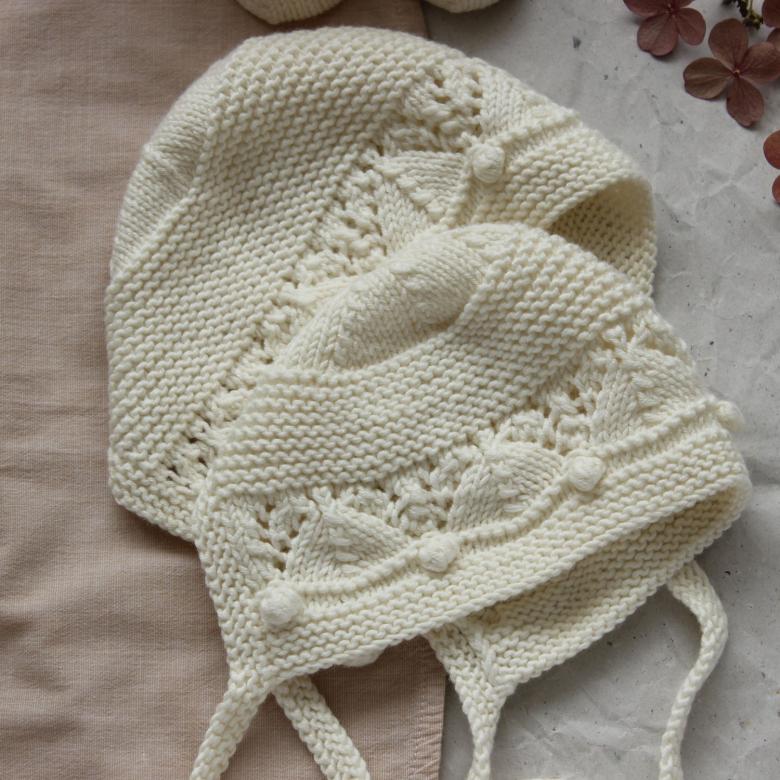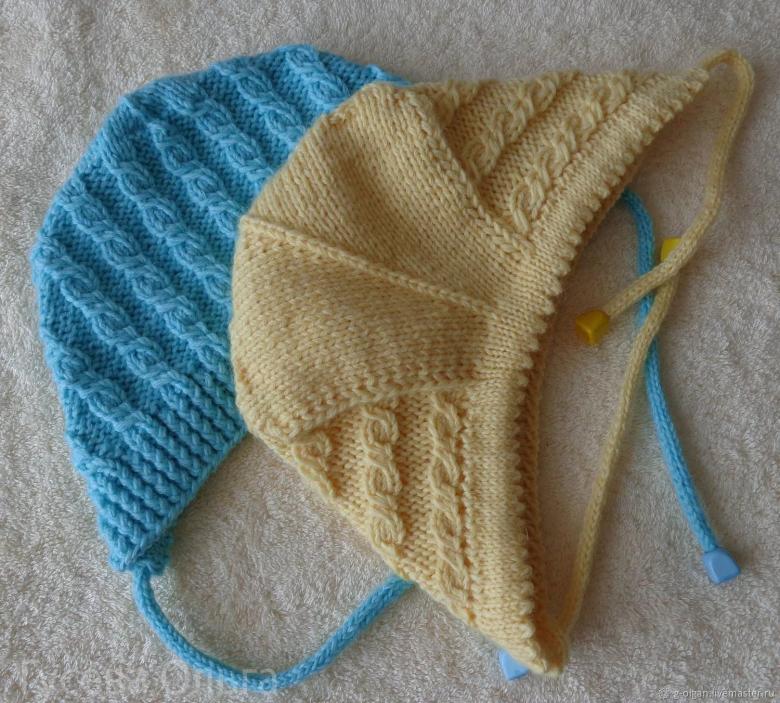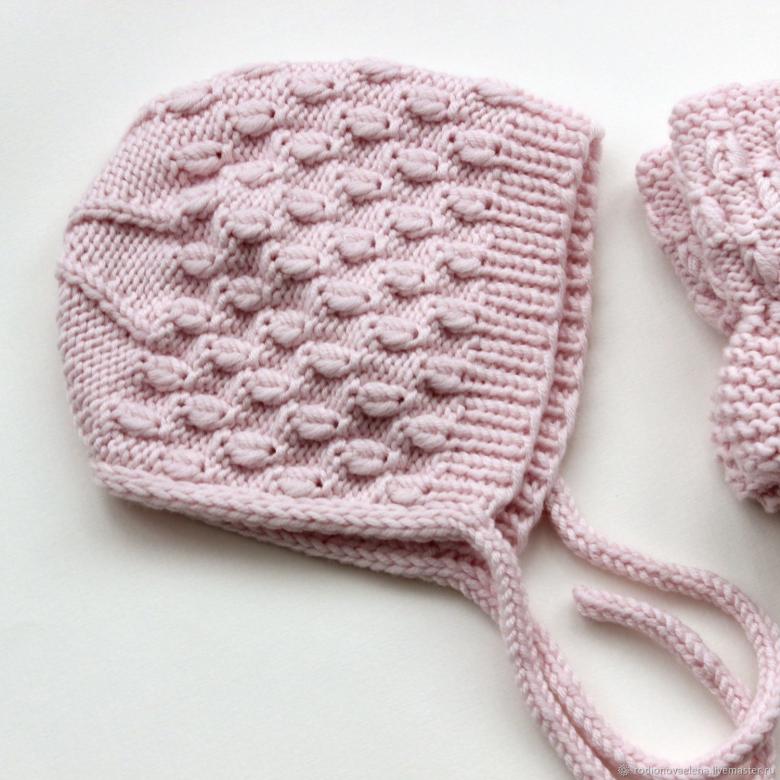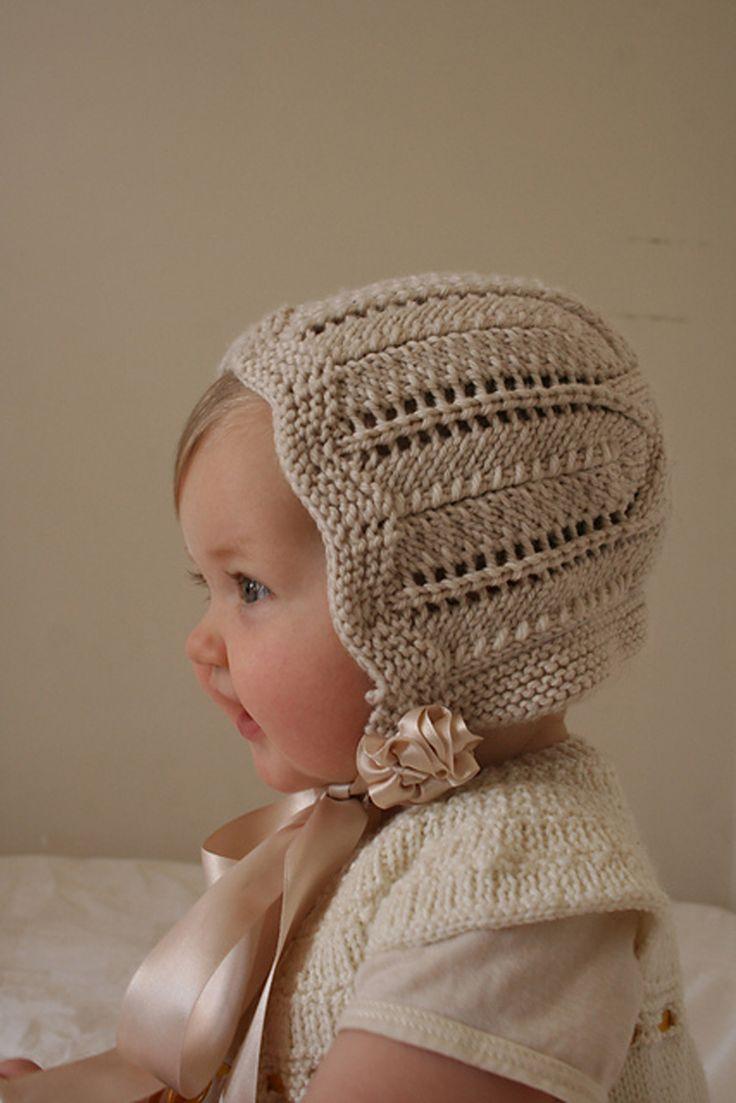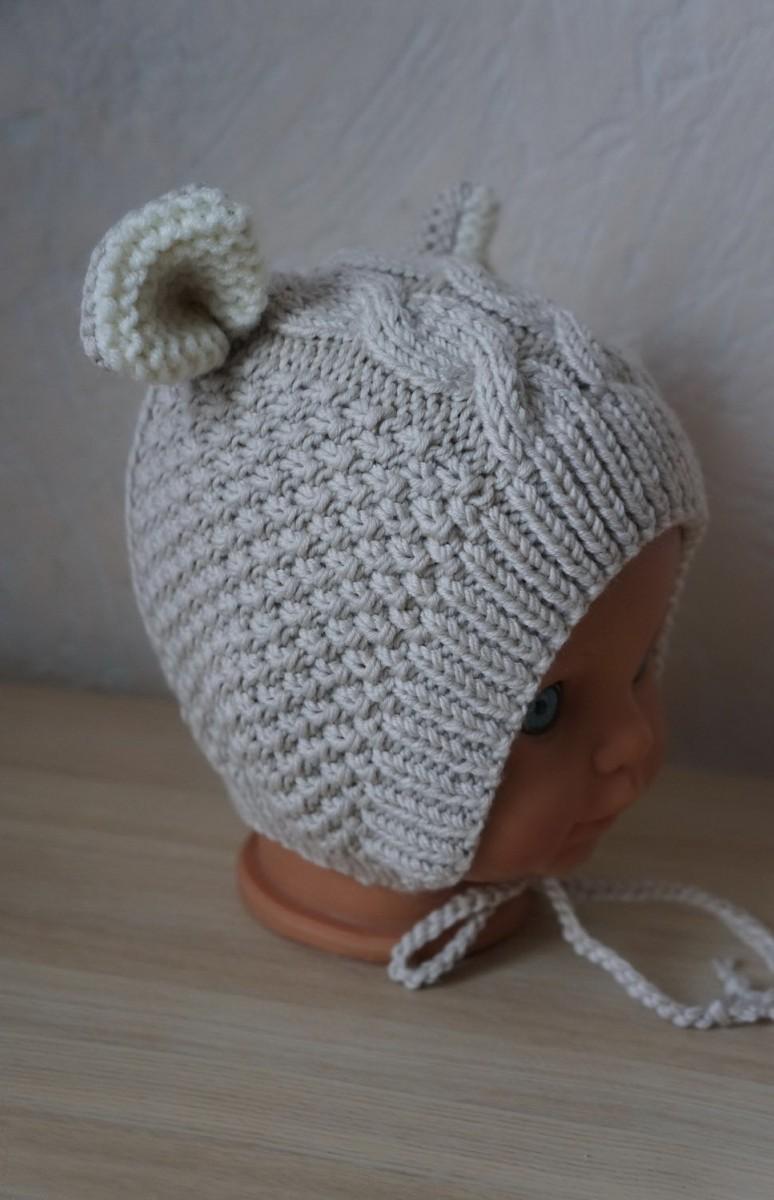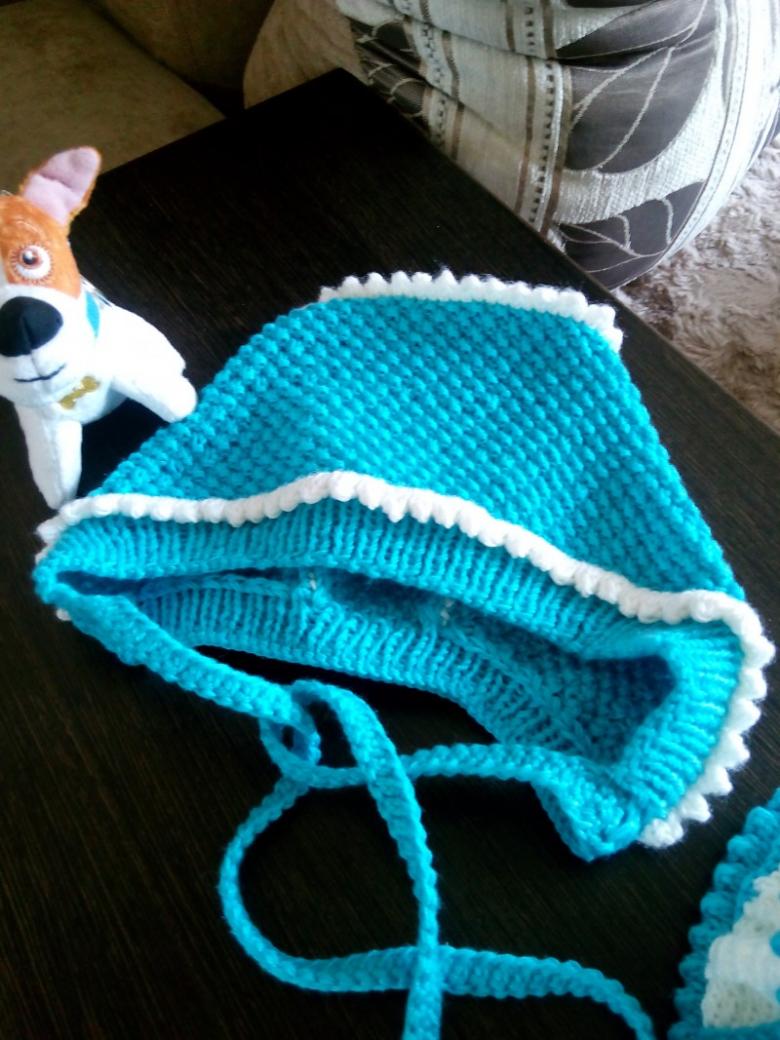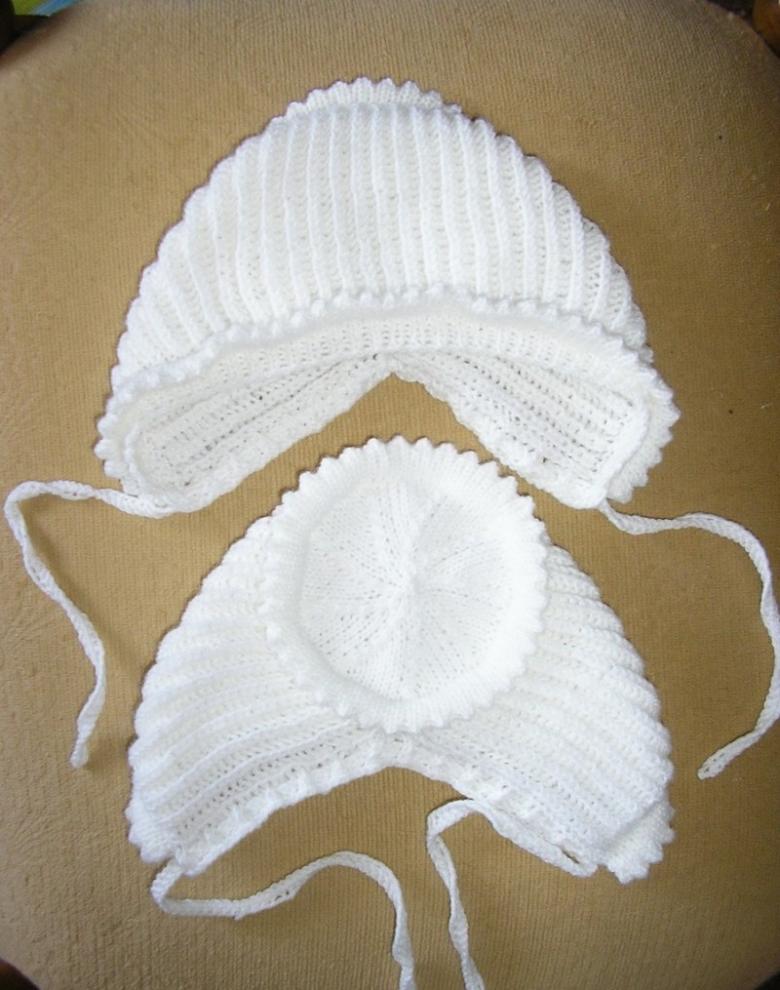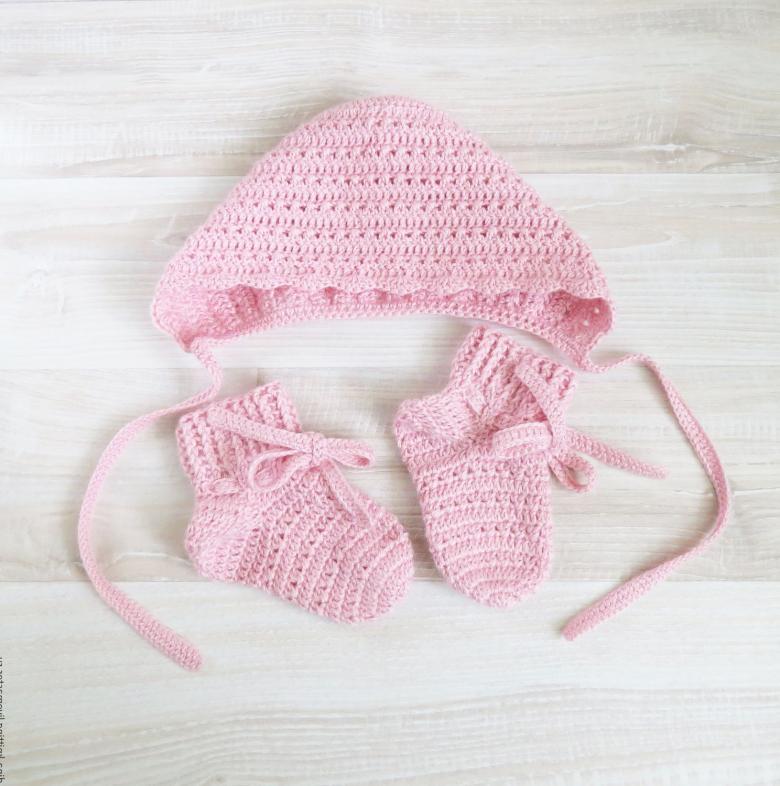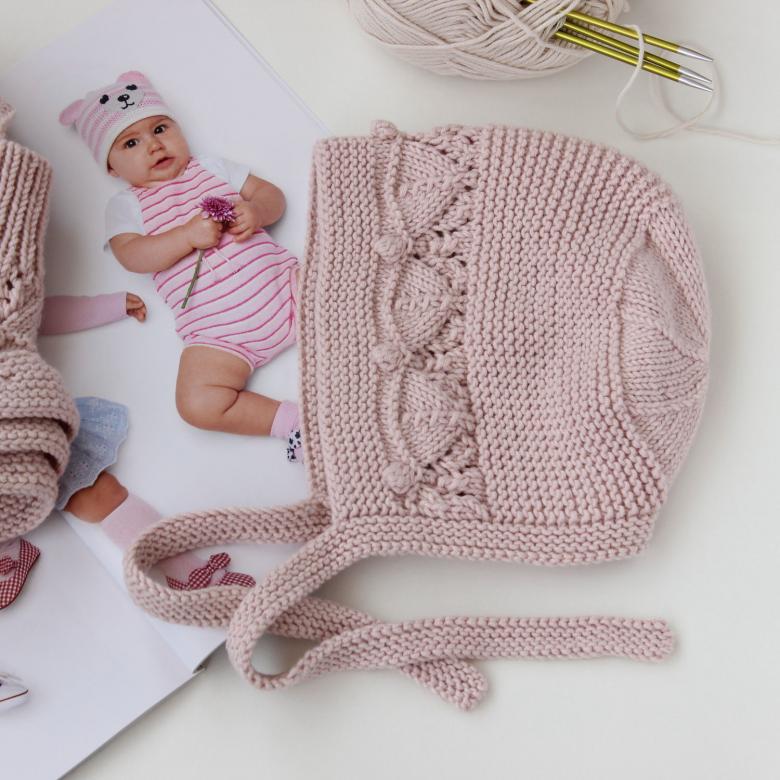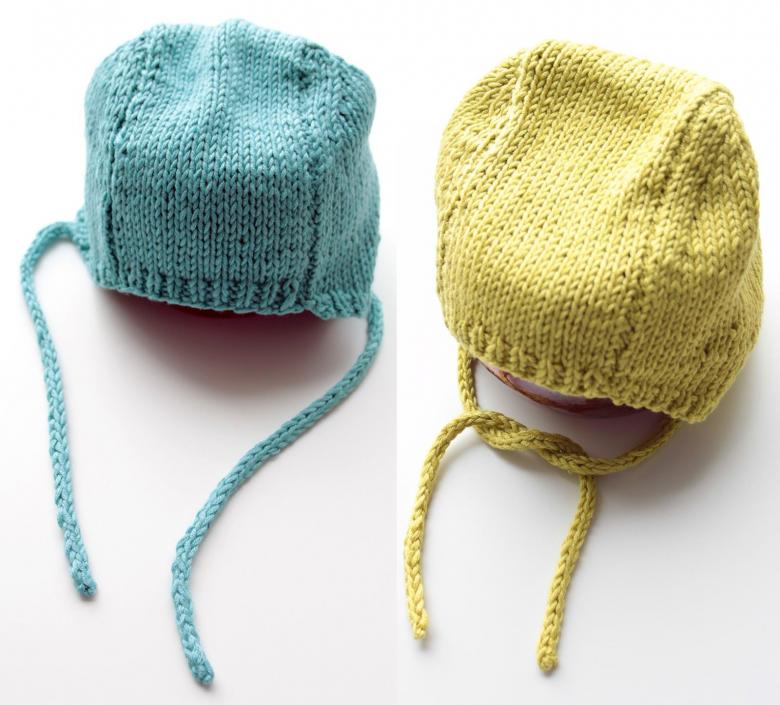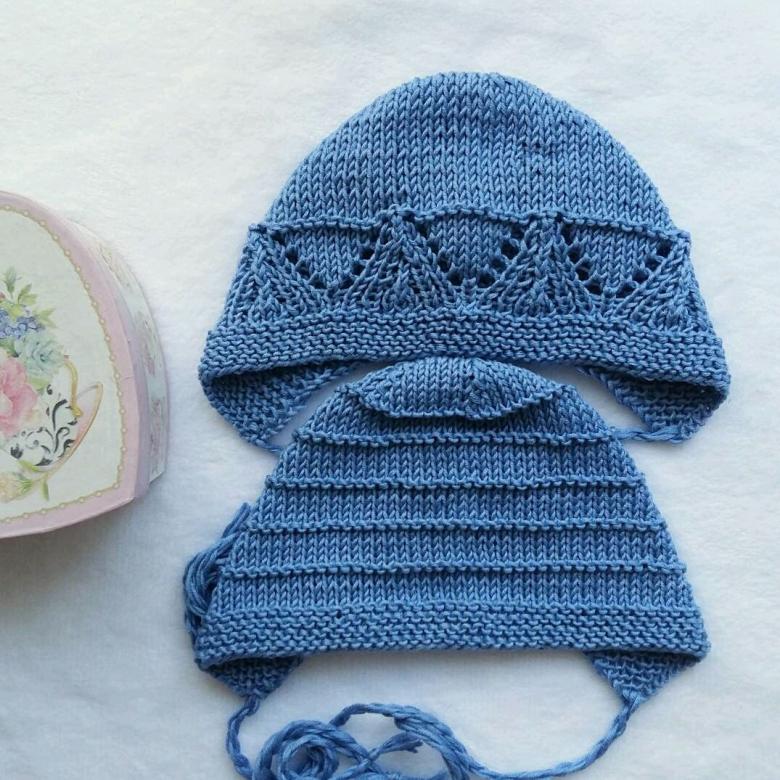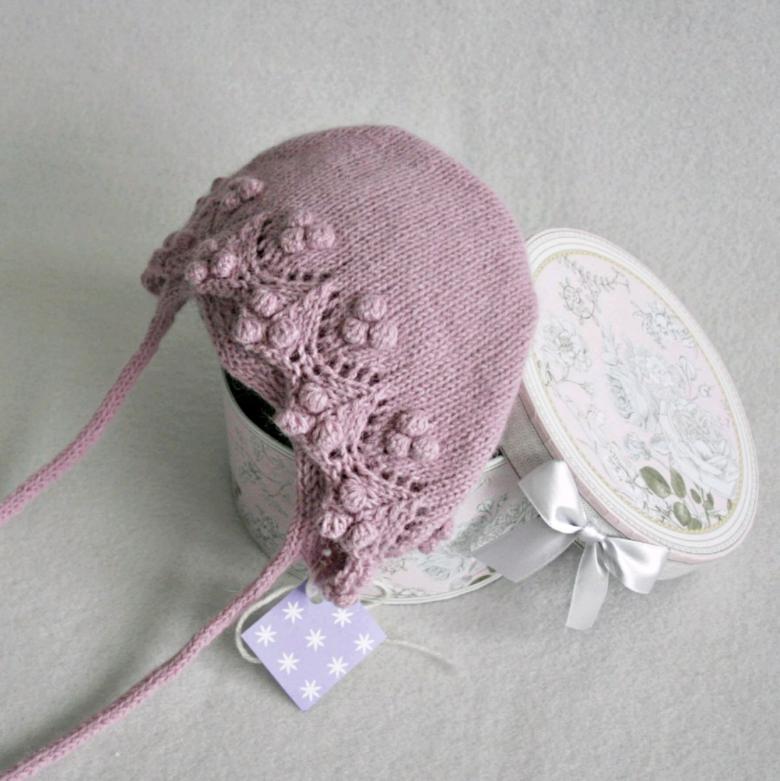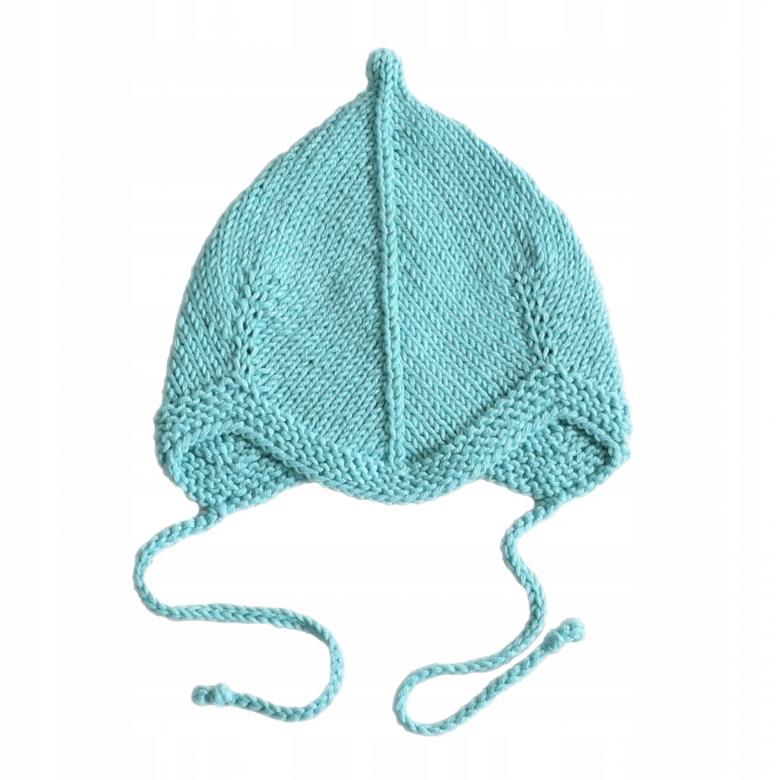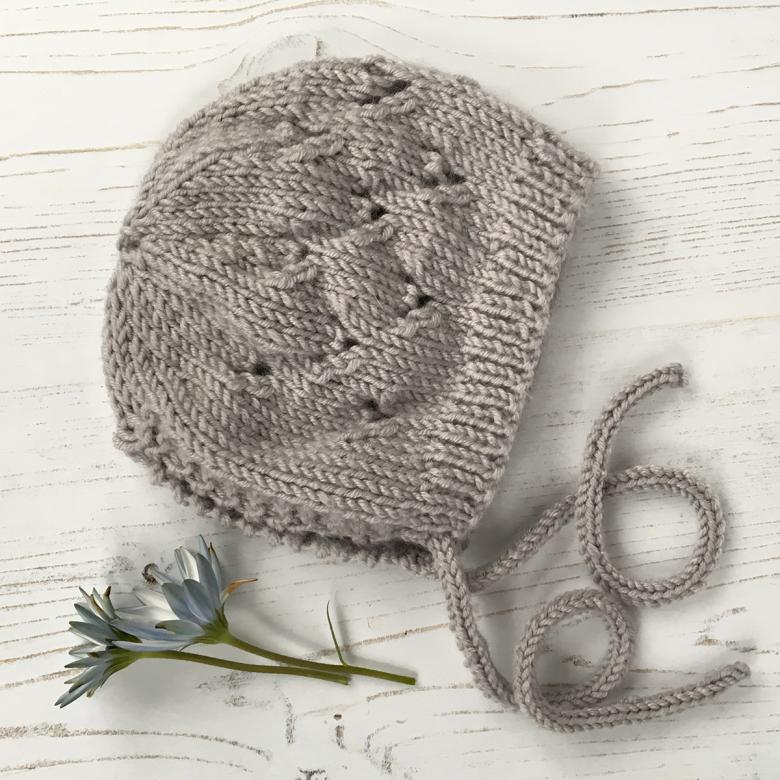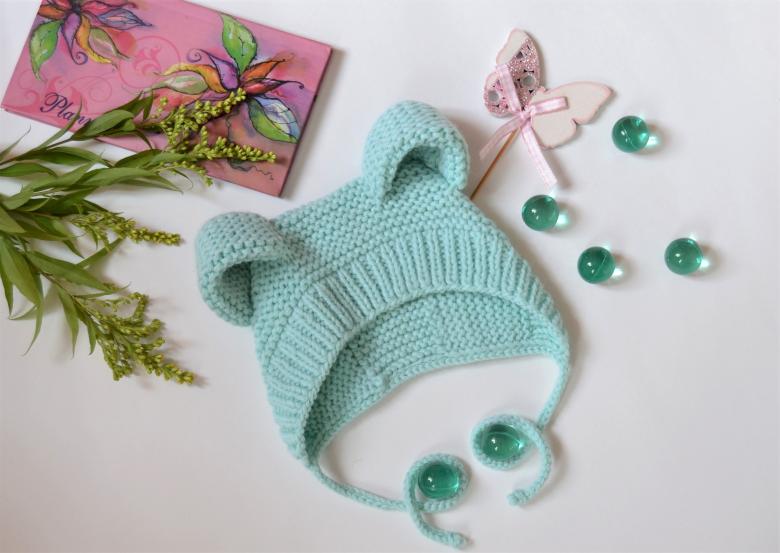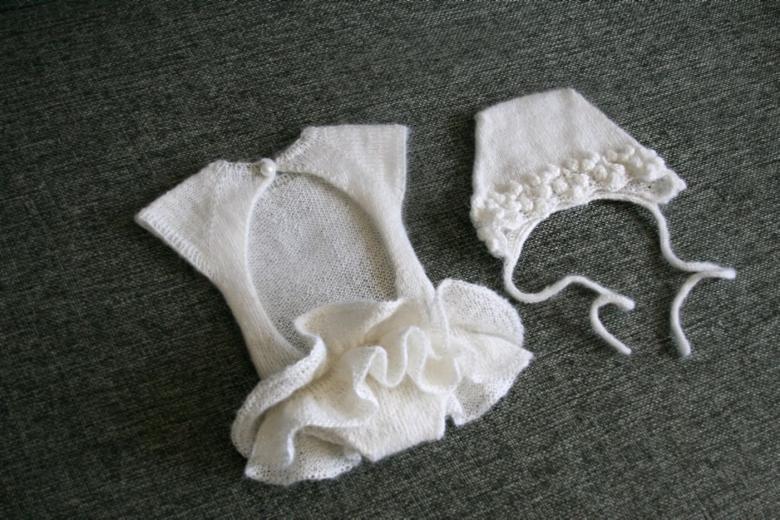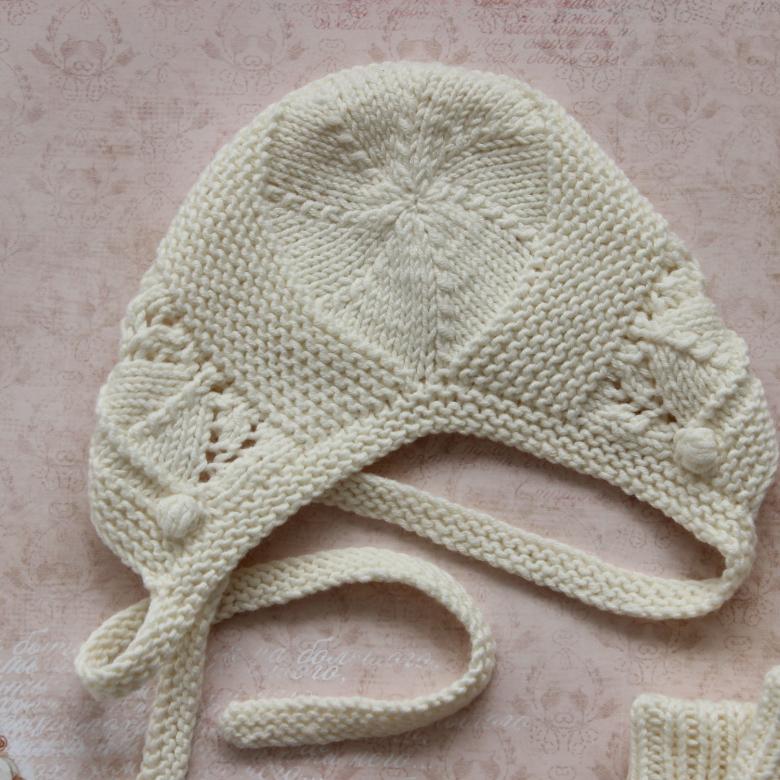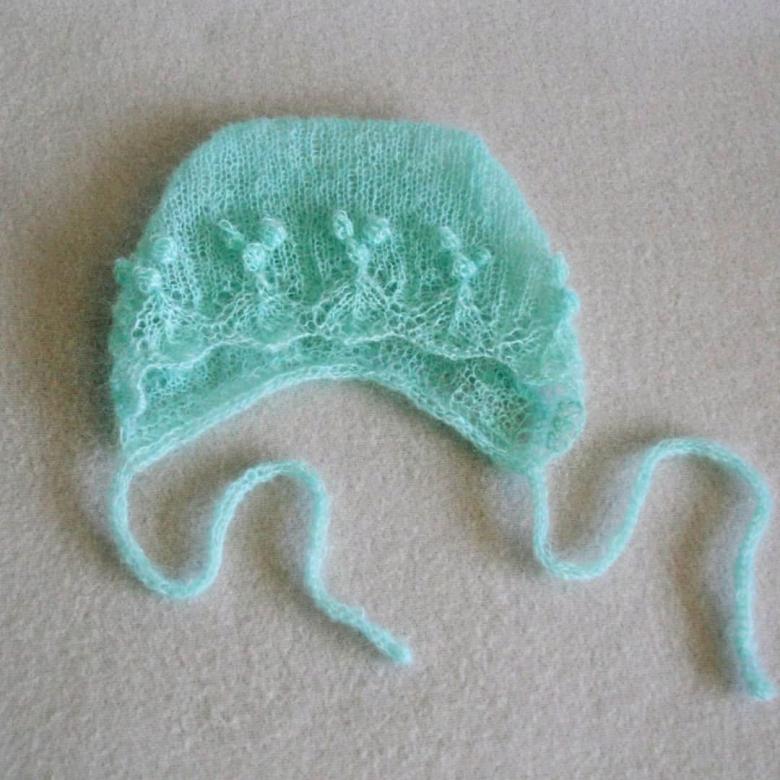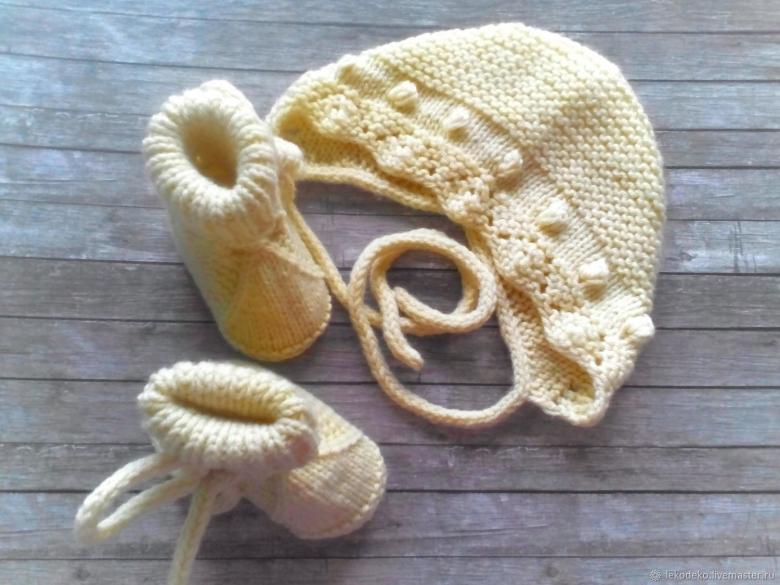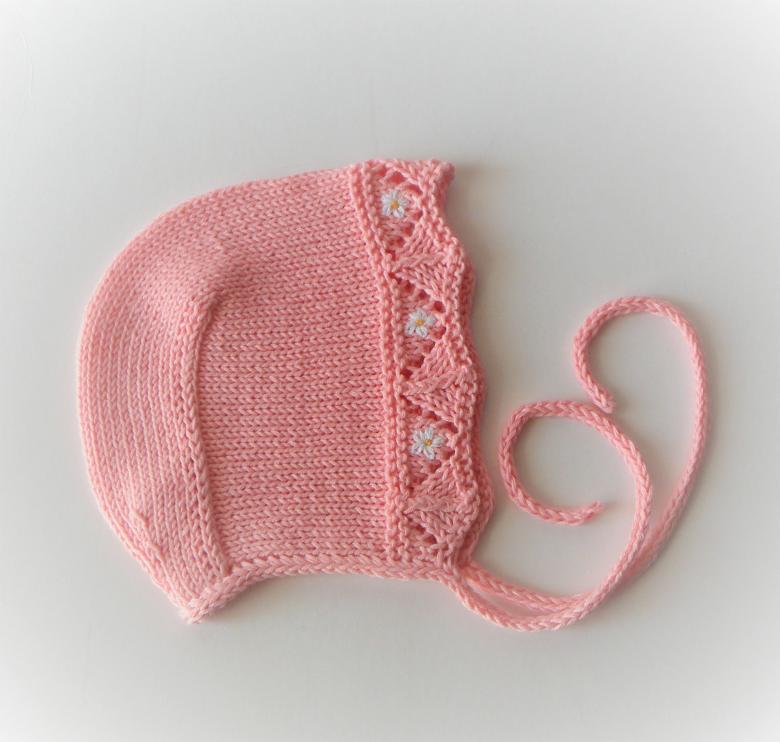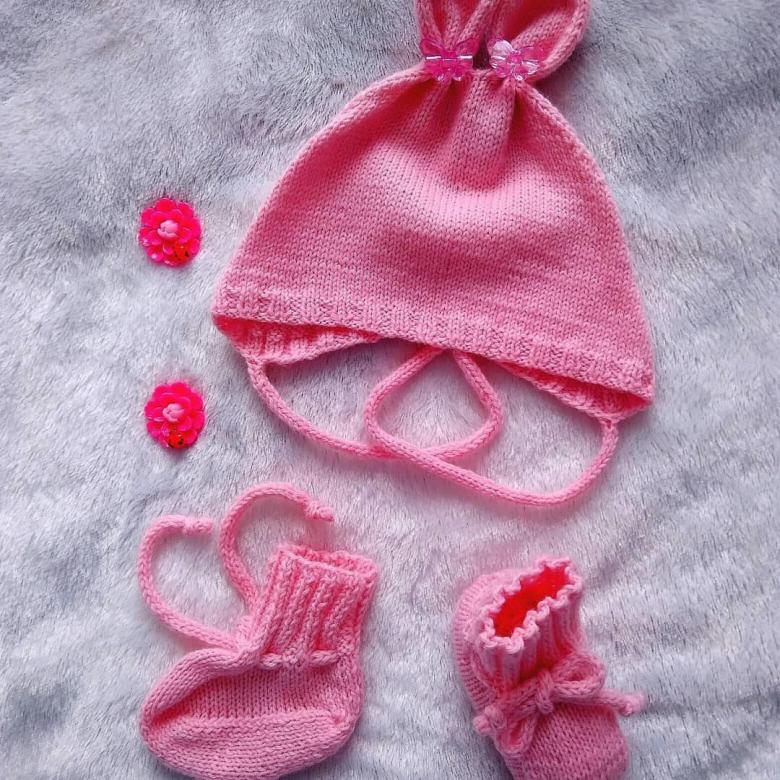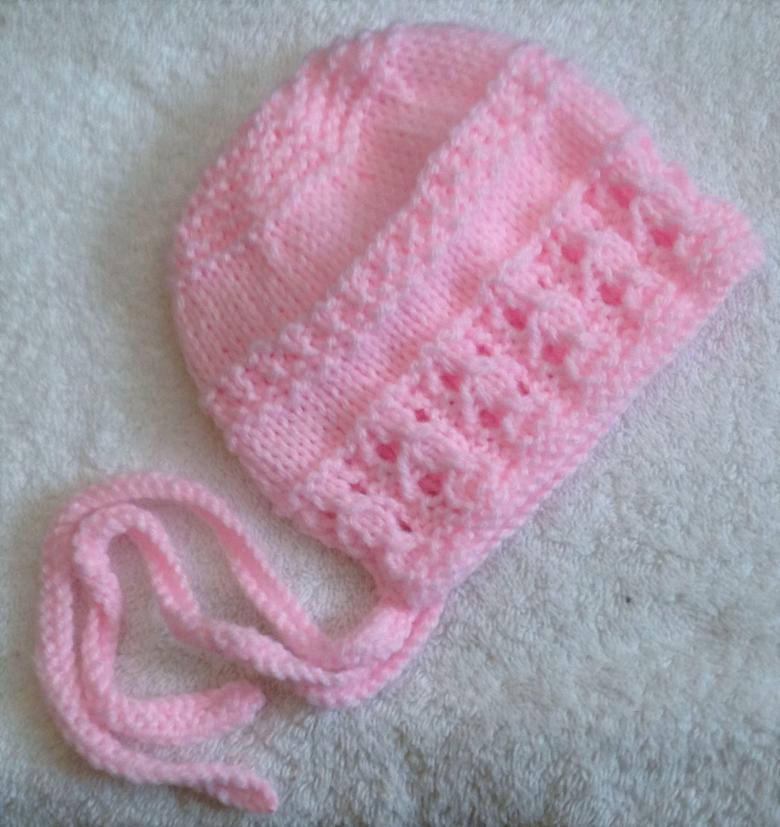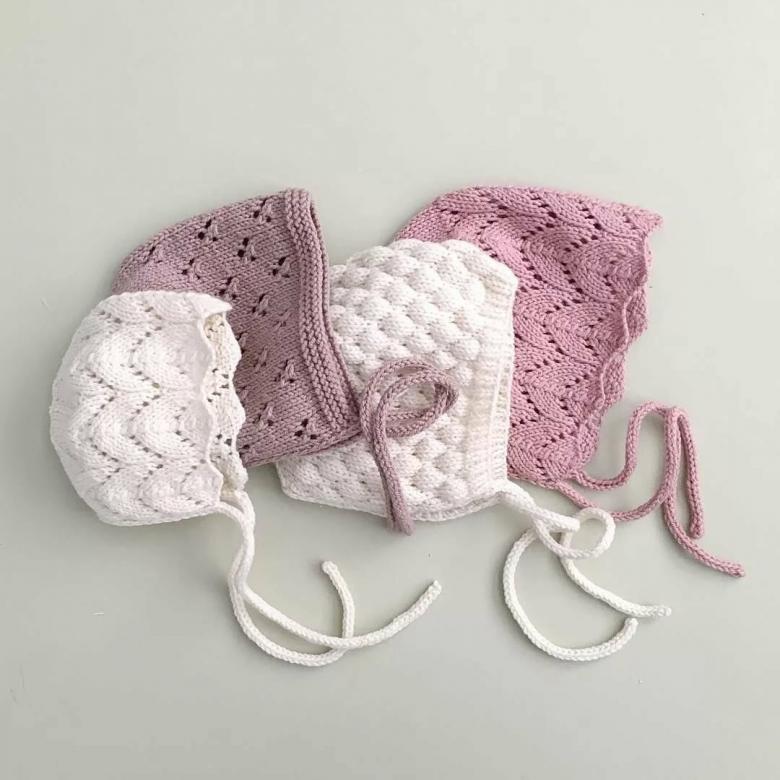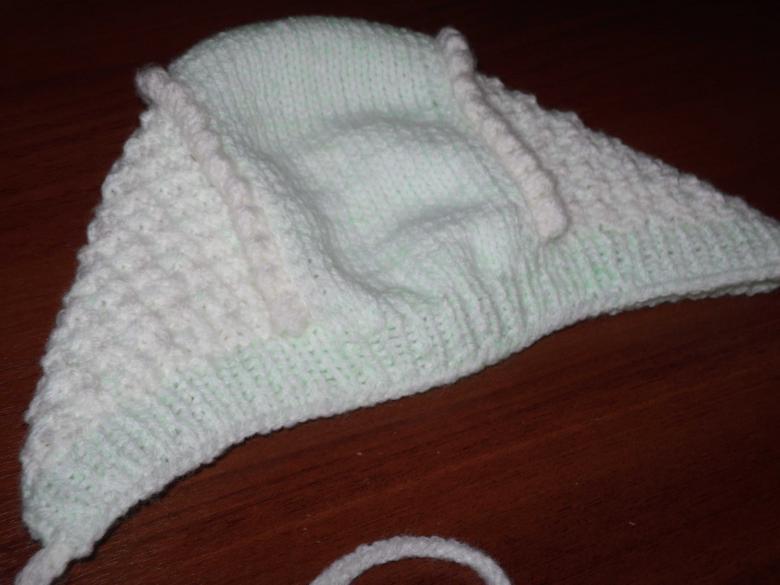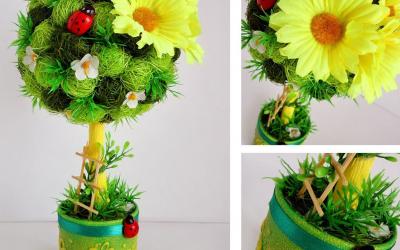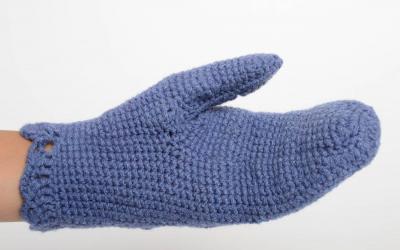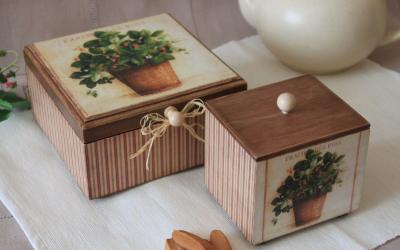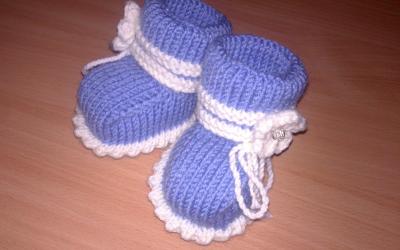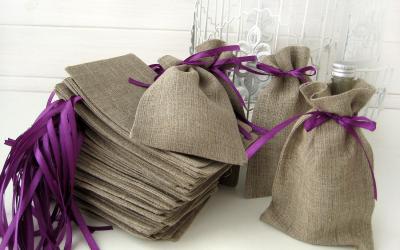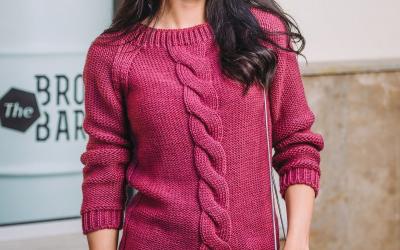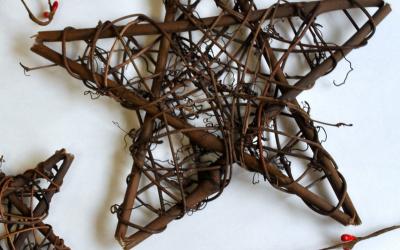A bonnet for a newborn baby with needles - a detailed description of the knitting scheme for beginners
Are you going to be a mom or do you want to give a gift to an expectant mother? Deciding what gift to choose? A great solution is a hat with your own hands.
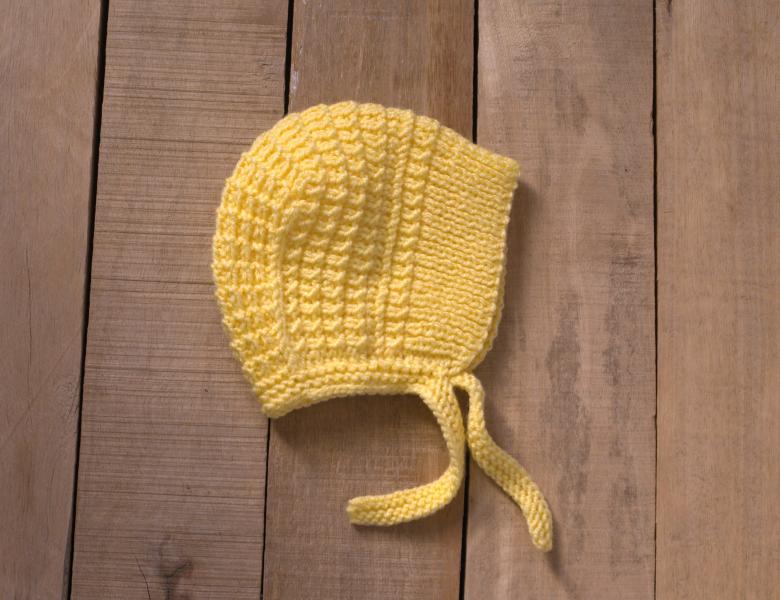
Headwear for the baby is especially important in the first months of his life, when the baby is not yet able to regulate the body temperature. A thin hat with a good air layer will be a great gift for the baby. And for expectant mothers and grandmothers, knitting will prove to be a pleasant activity before the most important day.
What are the best materials to use?
The skin of a newborn baby is very delicate, thin and vulnerable, so for the manufacture of the cap is not suitable for all fabrics. When choosing a yarn, first of all, be guided by such qualities of threads as:
- The ratio of synthetic to artificial fibers. In this case, natural is not always the best for the baby. Rough wool can not only scratch delicate skin, but also become a source of allergic reactions.
- The presence of additional inclusions in the main composition of the yarn.
- The height of the nap on the yarn. If you plan to wear a cap for walks in warm weather, choose thinner yarns.
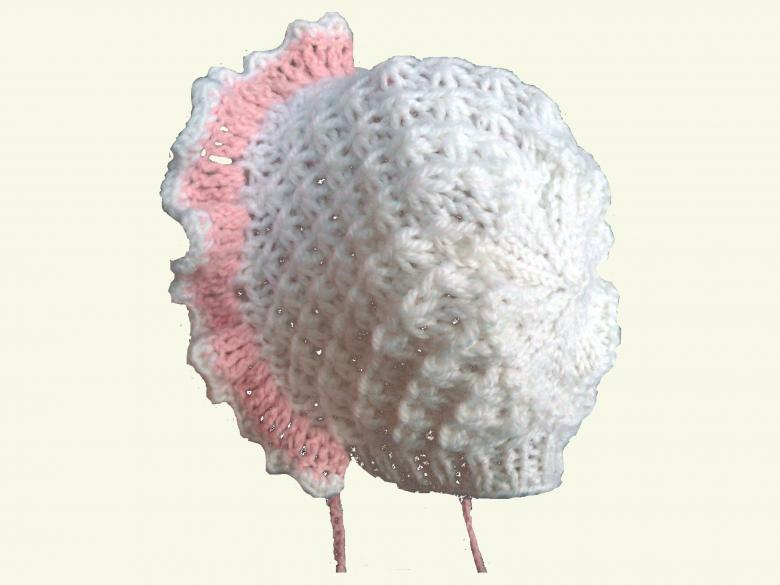
The ideal choice for the cap would be 100% acrylic yarn, "Pearl Pekhorka", containing viscose and cotton in equal amounts. The yarn is quite expensive, but is it worth saving on the comfort and health of your baby?
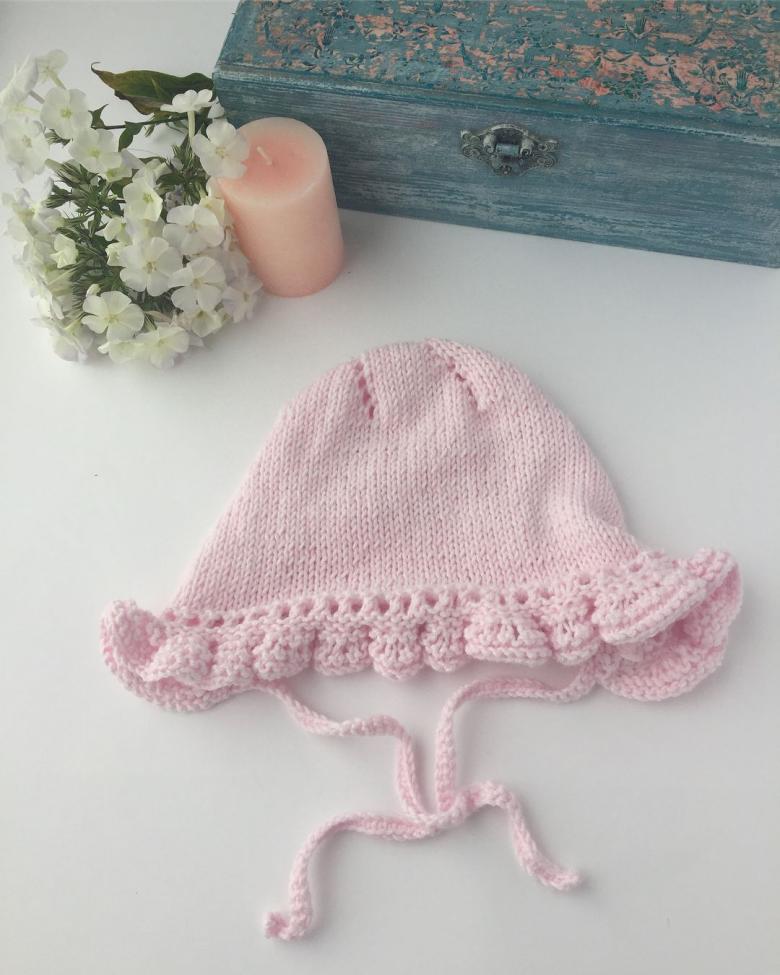
Variant knitting patterns
Before we begin the process itself, let's decide on a few general points:
- Choose your knitting needles. Consider what size and thickness of headpiece you want to make. It is best to prepare the needles individually for the hands of the needlewoman, and the shape you choose depending on the model of the product.
- Dimensional indicators. There are special tables on the head circumference of infants. Print a standard sample and use it during the needlework process.
- Choose a knitting technique. There are 3 methods of knitting headgear:
- Seamless technique;
- T-knitting technique;
- Assembled design, which involves working with individual patterned components and different knitting techniques.
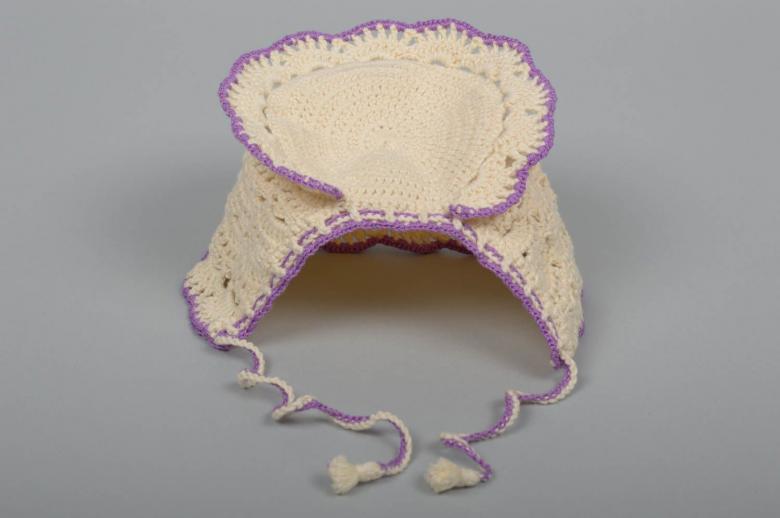
Features specific to each technique
Seamless technique.
- Dial in the first chain of loops. The number of loops depends on the size of the head (be guided by the parameters in the table).
- Knit another 4-8 cm of the future cap with a rubber band. You can use shawl knitting if you want.
- Next, knit 9-10 cm of the length of the fabric in the selected pattern.
- Now you need to form the back part and the two side halves. To do this, divide the last cast-off stitches into 3 equal parts.
- Remain unchanged in each row, the number of loops of the back part. Remove 1 stitch from each side, joining them with the edge stitches of the back wall of the cap.
- Continue working according to this scheme until 12 stitches remain in the side parts. Then begin to reduce the number of elements of the back of the product - 1 element for each turn of knitting.
- As soon as 8 loops remain on the needle, you need to pull the thread through the loops, closing the knitting.
- Additional accessories can be knitted separately, using a hook.
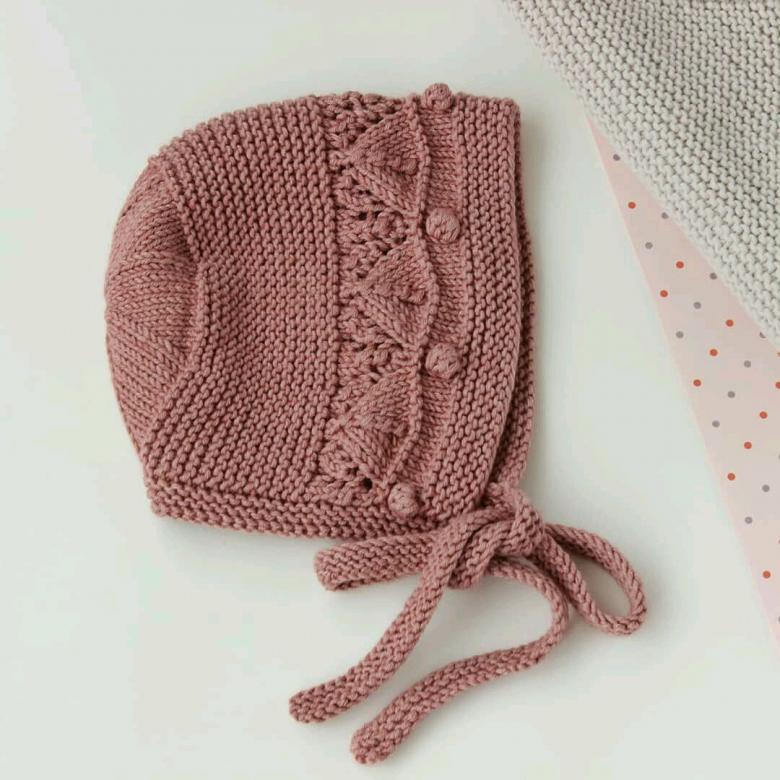
T-knitting variant
- This method involves the further assembly of parts with the formation of the outer seams.
- Knit the main fabric in the chosen pattern (length depending on the size chart).
- After about 12-14 cm from the beginning of knitting, divide all the available stitches into 3 parts: 20 elements for each. Close the two side halves by threading all the elements on the needle. Continue to dial in the stitches of the main part.
- The extra length of the back is 10-12 cm, with 1 row we remove 1 edge element each.
- When the extra 12 cm of the back side of the fabric has been knit, we thread through the row.
- Now our task is to join the components in such a way that the seams are on the outside and do not hurt the baby's skin in the future.
- To make the seams look more attractive, you can decorate them with ruffles, colored ribbons.
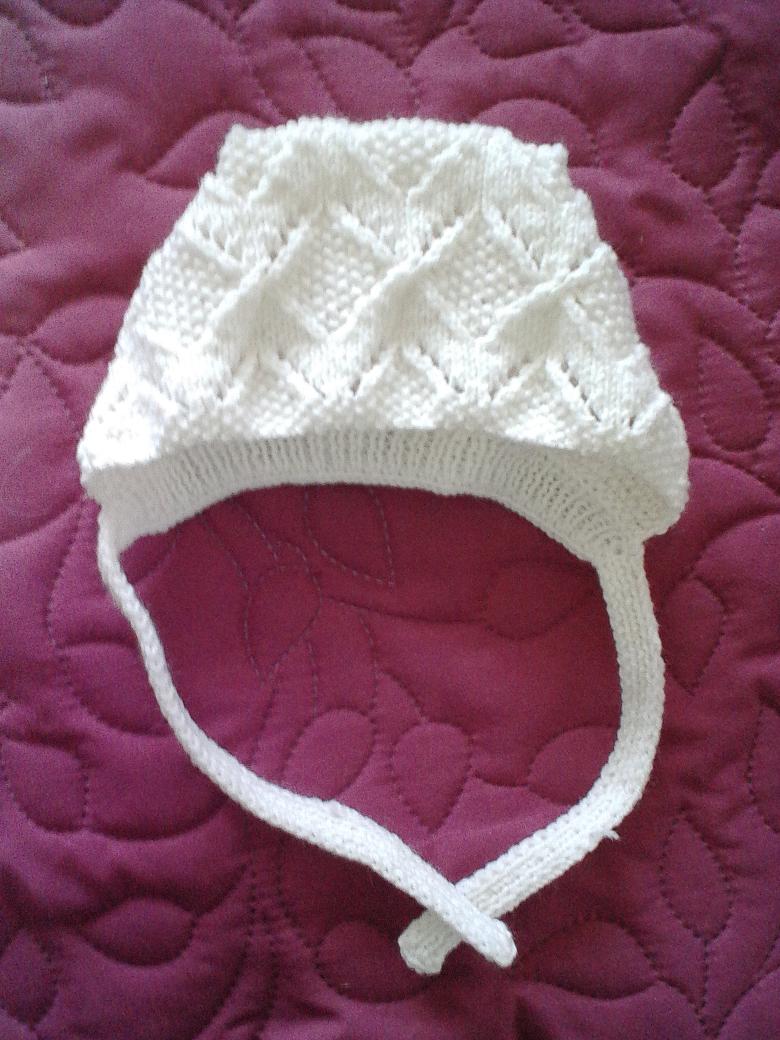
Assembled construction
Most often this method is used by lovers of crochet work. The main parts, such as the back of the neck, are knitted with needles. The side walls are knit in openwork patterns and further join the parts with stitches to the outside.
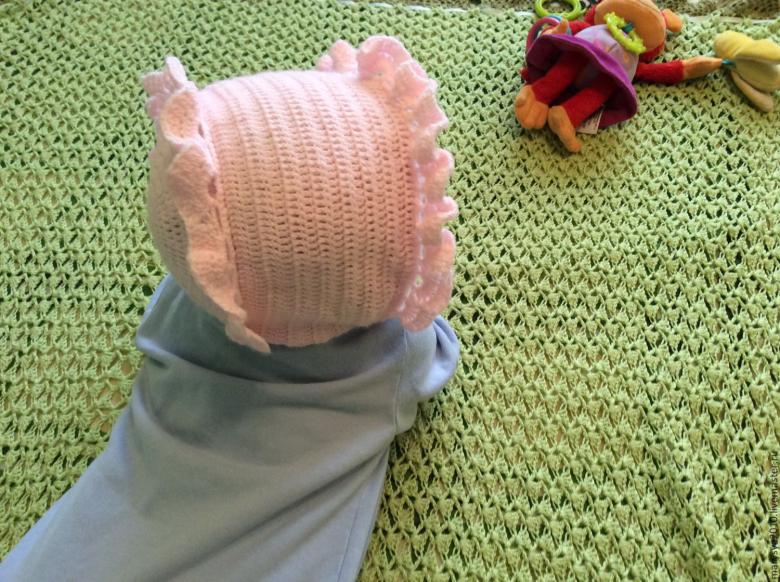
Examples of patterns for basic knitting
A simple pattern with alternation of front and back techniques
Materials for work:
- No. 2.5 needles;
- Any yarn of your choice.
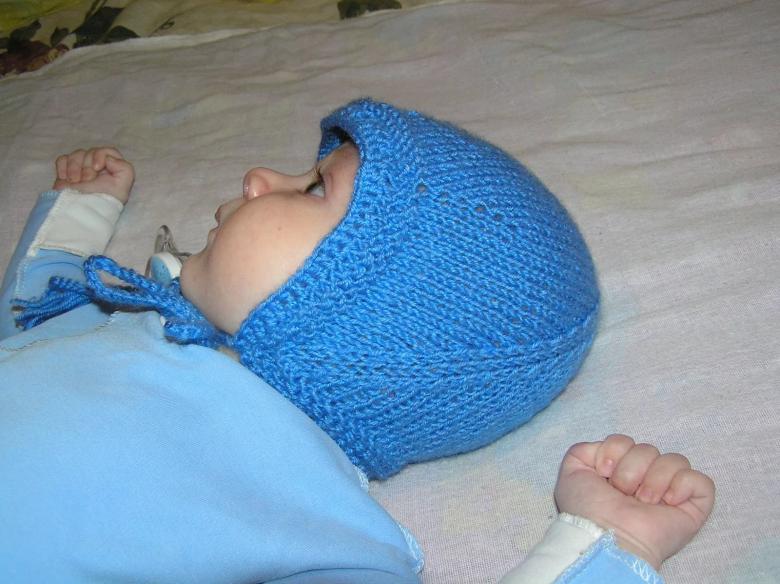
Step by step instructions:
- It is best to apply this technique in the seamless version of the pattern.
- The essence of the method is the even alternation of the front and back knitting of the product. The length of the knitting with a rubber band depends on the circumference of the baby's head. Elastic knit the beginning of the cloth (see the diagram above), after 5-6 cm begin to knit the sides of the bonnet in a simple pattern.
- You can improve the aesthetic appearance of the product by using different colored yarns.
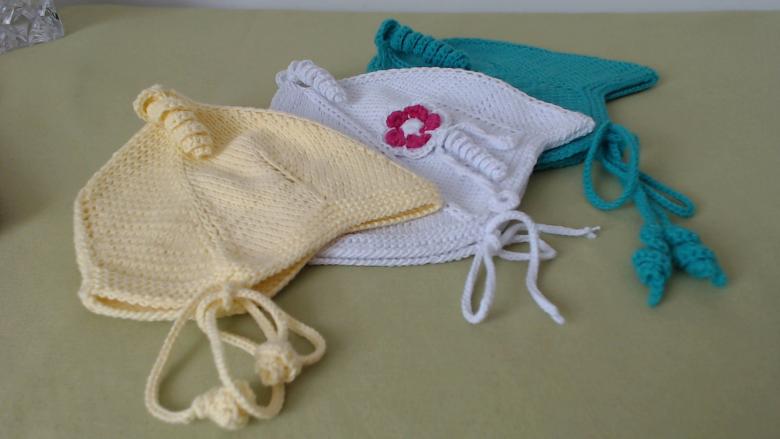
Warm knitting with "lumps"
Materials for work:
- Yarn of any color with a high content of merino wool;
- Needles # 3, # 3.5.
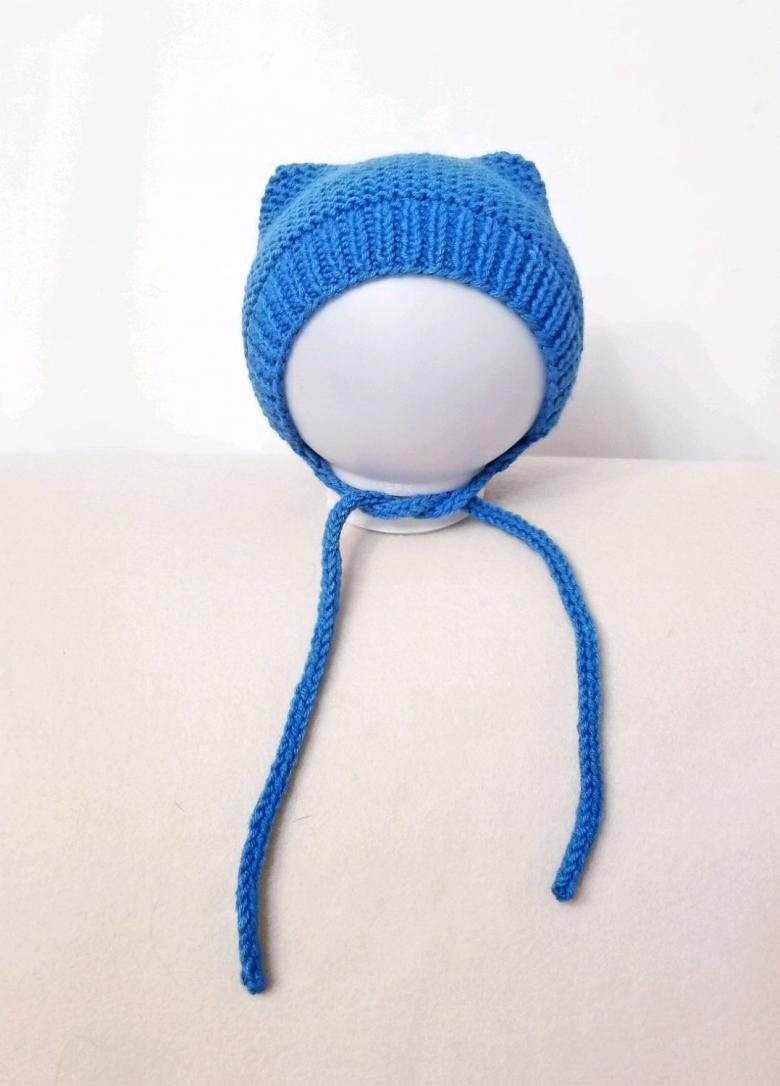
To work, we use the scheme, which we will find in the handbooks for needleworkers. The method is interesting because the cap is formed on the principle of alternating the usual shawl knitting and a pattern in the form of a cone.
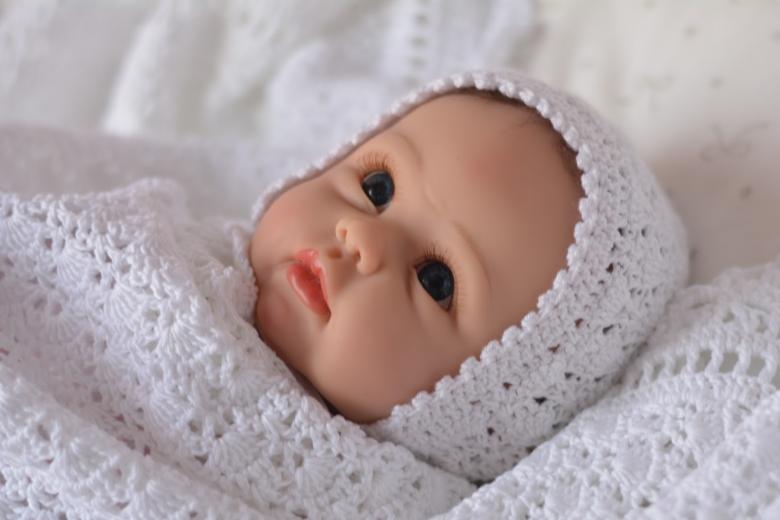
A brief instruction for beginners:
- The rows we knit through one: the odd rows are for alternate knitting of the obverse and the negative smoothness;
- The even-numbered rows are knitted in the pattern (see diagram);
- All rows after the 4th are knitted with the addition of extra elements.

A bonnet for a baby: another way
Choose any materials, most importantly, to be comfortable for you. The product begins to knit from the face of the child:
- Let's get the loops on the basis of 28 cm;
- Two centimeters knit with a rubber;
- Next, knit 8 cm of the fabric with a straight stitch;
- Divide into three parts all the available elements on the needle and knit the bottom of the hat (use the technique, as for knitting the heel of a sock).
- Gradually reduce the width of the bottom, reducing the number of elements.
- For the remaining loops, make extra rows to form the neck part of the cap, and close the knitting.

Simple and comfortable model for the baby is ready.
Comfortable baby cap will be useful for walks in the fresh air. And with a creative approach needlewoman also emphasizes the originality and ingenuity of the young mother.


